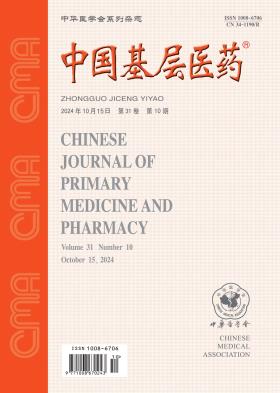Diagnostic performance of T-SPOT test for pediatric tuberculosis
引用次数: 0
Abstract
Objective To investigate the diagnostic performance of T-SPOT test for pediatric tuberculosis (TB). Methods The results of T-SPOT and PPD in 67 TB children and 71 TB-excluded children that diagnosed and treated in the People's Hospital of Jianyang from June 2014 to May 2017 were retrospectively analyzed.The diagnostic efficacy and consistency of the two tests, and the diagnostic efficacy of combined examination were evaluated. Results The sensitivity, specificity, positive predictive value, negative predictive value, positive likelihood ratio, negative likelihood ratio, Youden′s index of T-SPOT were 88.1%, 94.4%, 93.7%, 89.3%, 15.6, 0.13, 0.83, respectively.While the above parameters of PPD were 68.7%, 74.6%, 71.9%, 71.6%, 2.71, 0.42, 0.43, respectively.T-SPOT had higher sensitivity, specificity, positive predictive value, negative predictive value compared with PPD, and the differences were statistically significant(χ2=7.44, 10.54, 10.51, 7.45, all P 0.05). The positive rate of T-SPOT was higher in 5-18 years old group than that in 0-4 years old group(95.1% vs.76.2 %, χ2=5.01, P 0.05). Conclusion T-SPOT outperformed PPD in diagnostic assistance of pediatric TB overall.The diagnostic superiority is noticeable in the>4-18 years old other than the 0-4 years old.Compared with T-SPOT alone, combined tests should not be regarded to have increased sensitivity. Key words: T-lymphocytes; Enzyme-linked immunospot assay; Tuberculosis, pulmonary; Mycobacterium tuberculosis; Tuberculin test; Diagnosis; ChildT-SPOT试验对儿童结核病的诊断价值
目的探讨T-SPOT试验对儿童肺结核(TB)的诊断价值。方法回顾性分析2014年6月至2017年5月在简阳市人民医院诊治的67例肺结核患儿和71例肺结核排除患儿的T-SPOT和PPD结果。评估了两种检查的诊断效果和一致性,以及联合检查的诊断疗效。结果T-SPOT的敏感性、特异性、阳性预测值、阴性预测值、阳性似然比、阴性似然比和Youden指数分别为88.1%、94.4%、93.7%、89.3%、15.6、0.13和0.83。PPD的上述参数分别为68.7%、74.6%、71.9%、71.6%、2.71、0.42、0.43。T-SPOT与PPD相比具有更高的敏感性、特异性、阳性预测值、阴性预测值,差异有统计学意义(χ2=7.44,10.54,10.51,7.45,均P 0.05),5~18岁组T-SPOT阳性率高于0~4岁组(95.1%vs.76.2%,χ2=5.01,P 0.05)。诊断优势在>4-18岁的人群中明显高于0-4岁的人群。与单独的T-SPOT相比,联合测试不应被认为具有增加的灵敏度。关键词:T淋巴细胞;酶联免疫斑点法;肺结核;结核分枝杆菌;结核菌素试验;诊断;儿童
本文章由计算机程序翻译,如有差异,请以英文原文为准。
求助全文
约1分钟内获得全文
求助全文
来源期刊
CiteScore
0.10
自引率
0.00%
发文量
32251
期刊介绍:
Since its inception, the journal "Chinese Primary Medicine" has adhered to the development strategy of "based in China, serving the grassroots, and facing the world" as its publishing concept, reporting a large amount of the latest medical information at home and abroad, prospering the academic field of primary medicine, and is praised by readers as a medical encyclopedia that updates knowledge. It is a core journal in China's medical and health field, and its influence index (CI) ranks Q2 in China's academic journals in 2022. It was included in the American Chemical Abstracts in 2008, the World Health Organization Western Pacific Regional Medical Index (WPRIM) in 2009, and the Japan Science and Technology Agency Database (JST) and Scopus Database in 2018, and was included in the Wanfang Data-China Digital Journal Group and the China Academic Journal Comprehensive Evaluation Database.

 求助内容:
求助内容: 应助结果提醒方式:
应助结果提醒方式:


